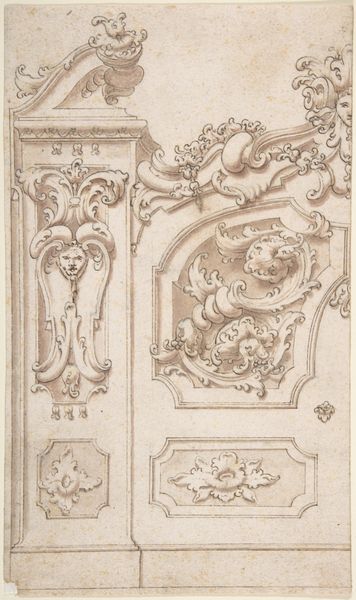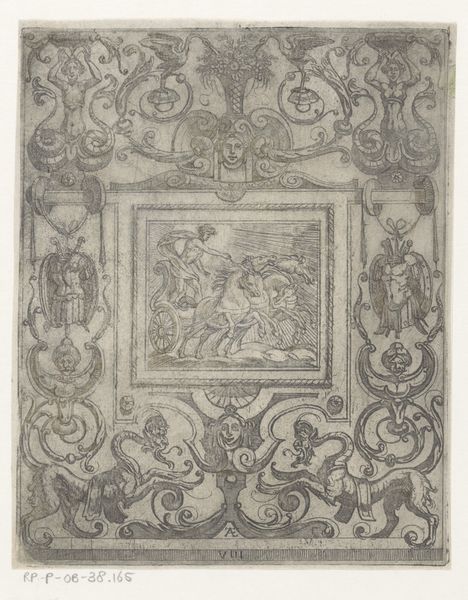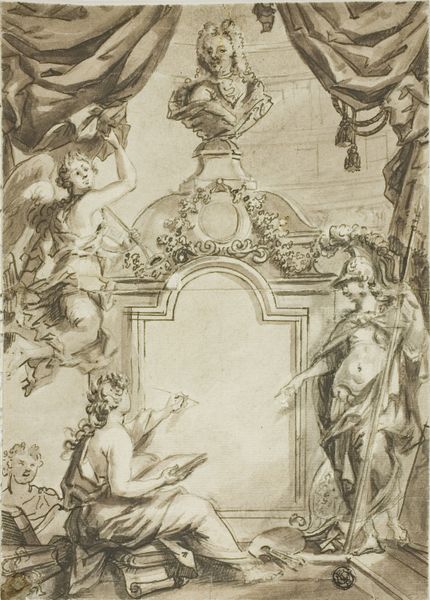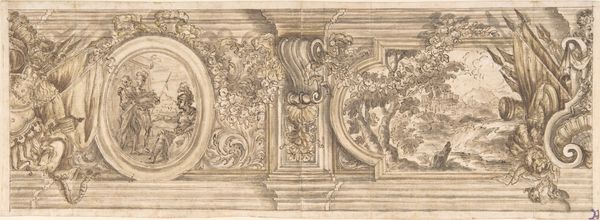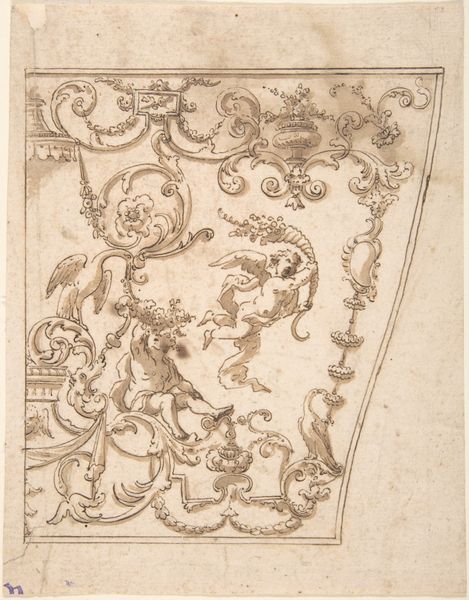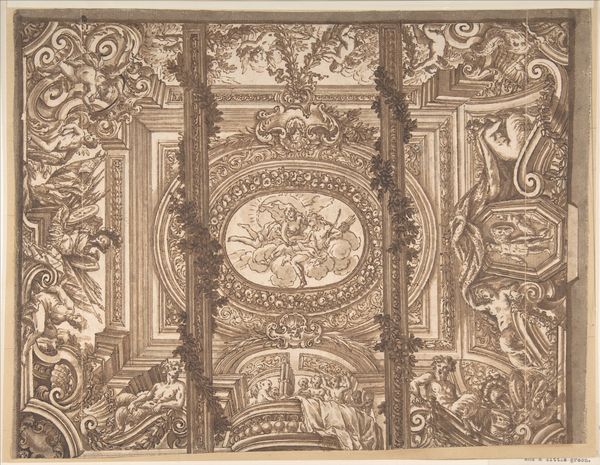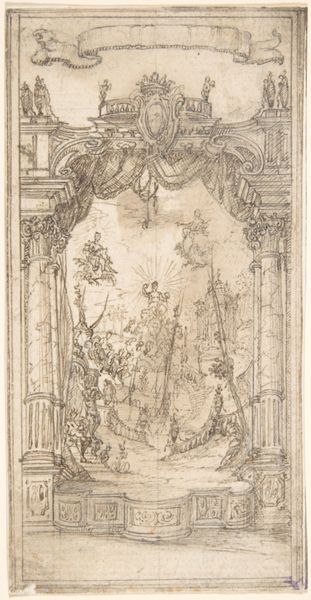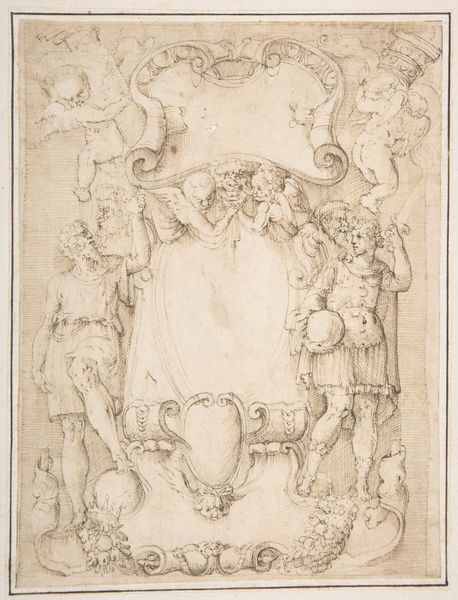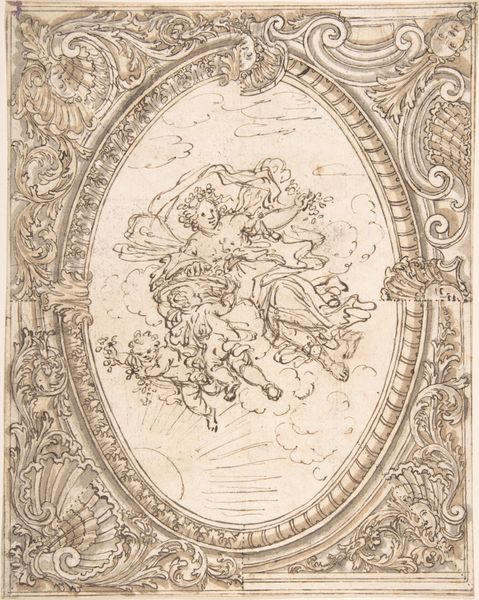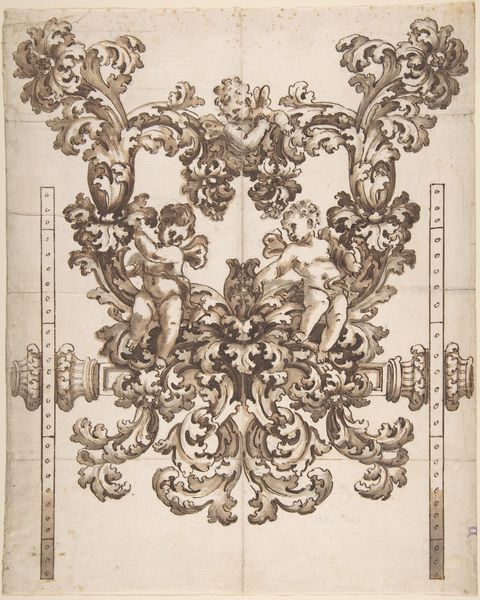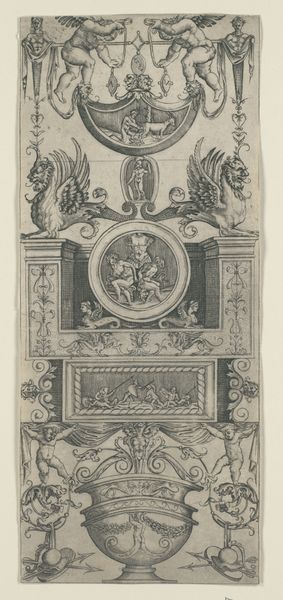
drawing, print, pencil
#
drawing
#
baroque
# print
#
pencil
#
history-painting
Dimensions: sheet: 7 7/8 x 5 1/4 in. (20 x 13.3 cm)
Copyright: Public Domain
Curator: Here we have an intriguing “Wall Design with Flying Putto,” dating from the 17th to 18th century. The artist is anonymous, and the piece is a drawing created with pencil and print. Editor: My first impression is one of restrained exuberance. The putto is active, almost bursting out of the frame, yet the muted tones give it a certain contemplative feel. It feels... contained but longing to break free. Curator: I see the cherubic figure, deeply embedded within the ornate architectural setting. It embodies familiar Renaissance ideals appropriated in Baroque art, channeling that enduring iconography into expressions of spiritual or temporal power. Editor: And within those Baroque trappings lies a whole history of appropriation. Cherubs themselves weren't a Christian invention but were integrated from pagan traditions as symbols of divine love. Consider whose walls this design might have adorned, reflecting that social and economic power. Curator: Absolutely, the cherubic figures flanking the central image are classic Baroque ornamentation. These are echoes of cultural memory; even in a secular context, those images stir feelings of piety or sanctity. I think a large part of that comes from recognizing familiar imagery in new and complex surroundings. Editor: Do you feel that connection remains for contemporary viewers? In a world saturated with images, the symbolic weight might be lost to all but those of us who've done the deep dive into art history. What's it *say* now, rather than what did it *say* then? Does the modern secular viewer pick up any sense of cultural authority, or does it simply feel quaint, ornate? Curator: Perhaps some of both? But I think the yearning towards the heavens, towards something beyond our earthly existence, transcends time. It is that eternal appeal, wrapped within unique markers that still touch upon our shared humanity. Editor: Agreed. Even stripped of its explicit religious symbolism, the visual longing for something "more" still speaks volumes. It’s a reflection on power, certainly, but also a subtle questioning of its very earthly limitations. It all boils down to hope, maybe, even when surrounded by institutions or establishments. Curator: It seems we've managed to find a shared symbolic reading that feels appropriate for its setting in the Met and reflective of ourselves in turn. Editor: Yes, a surprising little drawing harboring surprisingly big conversations, if we only allow them to surface.
Comments
No comments
Be the first to comment and join the conversation on the ultimate creative platform.
